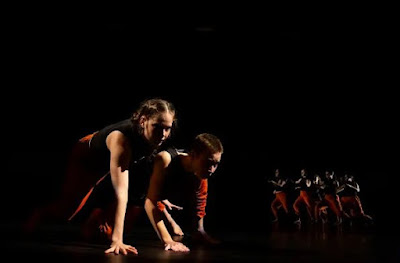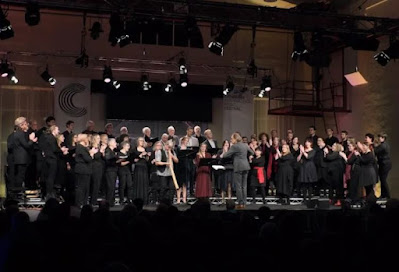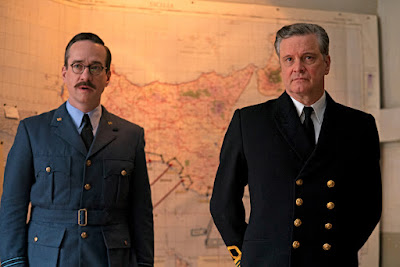Fitters Workshop, May
7
Reviewed by Len Power
Fine local voices assembled for a choral concert of tradition-inspired
Nordic works with unique contemporary Australian compositions about the land
and its peoples They provided a welcome sense of warmth and coming together for
the wintry Canberra evening.
Ancient folk rituals and centuries of Lutheran hymns were
the inspiration for many of the contemporary Nordic works from countries such
as Sweden, Estonia, Latvia, Iceland and Norway.
Australia was represented by the works of Ross Edwards,
Gordon Hamilton, Brenda Gifford and Sarah Hopkins. There was also a new work that linked both
north and south by Ella Macens, representing genuine Latvian traditions in
Australia.
Three local choirs – Oriana Chorale, Kompactus Youth Choir
and Luminescence Chamber Singers - performed separately and together. There was also Matthew Doyle on didgeridoo and
Sally Walker on flute. On occasion,
recorded sounds and percussive instruments added to the atmosphere of the works
in the well-planned and performed program.
The Oriana Chorale, directed by Dan Walker, started the
concert with a work by Sweden’s Karin Rehnqvist called “In Heaven’s Hall”. Conducted by Roland Peelman from the centre
of the auditorium, sopranos strategically placed around the hall gave voice to Rehnqvist’s
signature motif of “Kulning”, a vocal technique depicting the ancient call of
Nordic herding girls driving their flocks.
It was a startling and atmosphere-establishing beginning.
The other highlight by the Oriana Chorale in this massive
program of works was the Australian composition by Ross Edwards called “Waabin”
with its text of Whadjuk Noongar words.
This joyous work was sung superbly by the women in the choir accompanied
by Sally Walker on flute.
The highlights of the works presented by Kompactus Youth
Choir, directed by Olivia Swift, included the exquisite and delicate “Stars” by
Latvia’s Eriks Ešenvalds, with his trademark sound of tuned wine glasses, and
Gordon Hamilton’s “Antarctica”. This
challenging work was accompanied by recorded directional sounds, creating an
extraordinary sense of the landscape and its atmosphere.
Luminescence Chamber Singers, directed by AJ America,
showcased a sublime “Hear Us In Heaven” by Iceland’s Anna Þorvaldsdóttir and
premiered a new work with a fine sense of tradition, “Yangga – Sing” by Yuin
artist, Brenda Gifford. Their singing of
works by Eva Lestander of Sweden and Tone Krohn of Norway also showed what fine
artists they are.
Matthew Doyle gave outstanding didgeridoo performances and,
from the centre of the auditorium, Sally
Walker on flute played a delightful “Ulpirra” by Ross Edwards, finishing with an
infectious shout of joy.
All the choirs combined for the new work by
Latvian-Australian Ella Macens, “While Winter Is Here”. The music contained lovely melodies and the
text was particularly evocative. One of
the final works presented was “Past Life Melodies”, with its sense of nostalgia
and longing, by Australia’s Sarah Hopkins.
This concert was remarkable for the number, range and
challenge of the works presented and the fine singing by everyone
involved. It was an evening to remember.
Photo by Peter Hislop
This review was first
published in the Canberra CityNews digital edition of 8 May.
Len Power's reviews
are also broadcast on Artsound FM 92.7 in the ‘Arts Cafe’ and ‘Arts About’
programs.




















